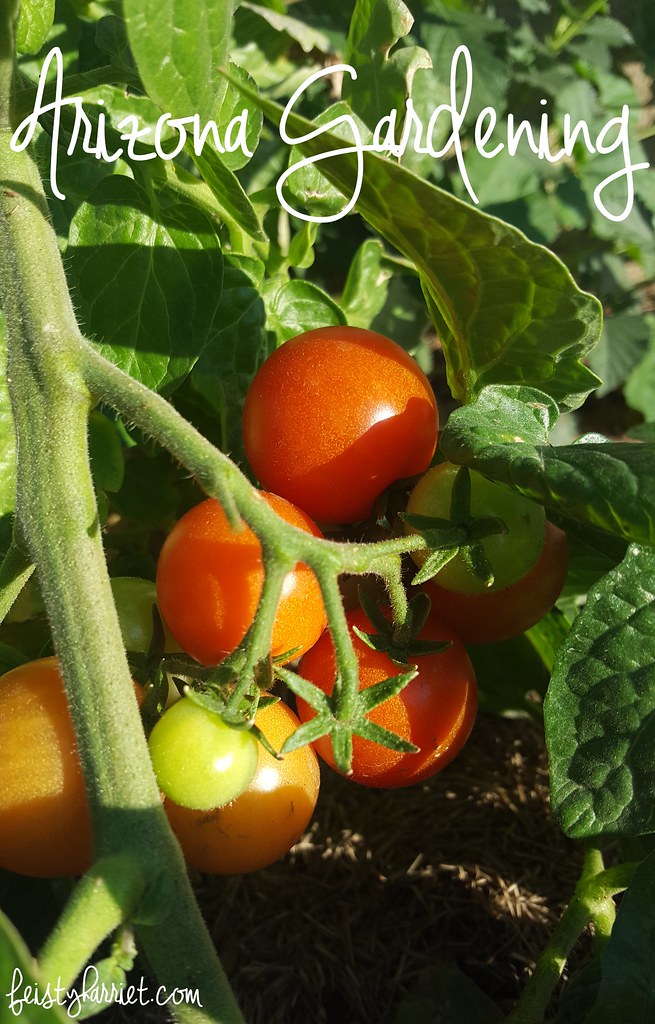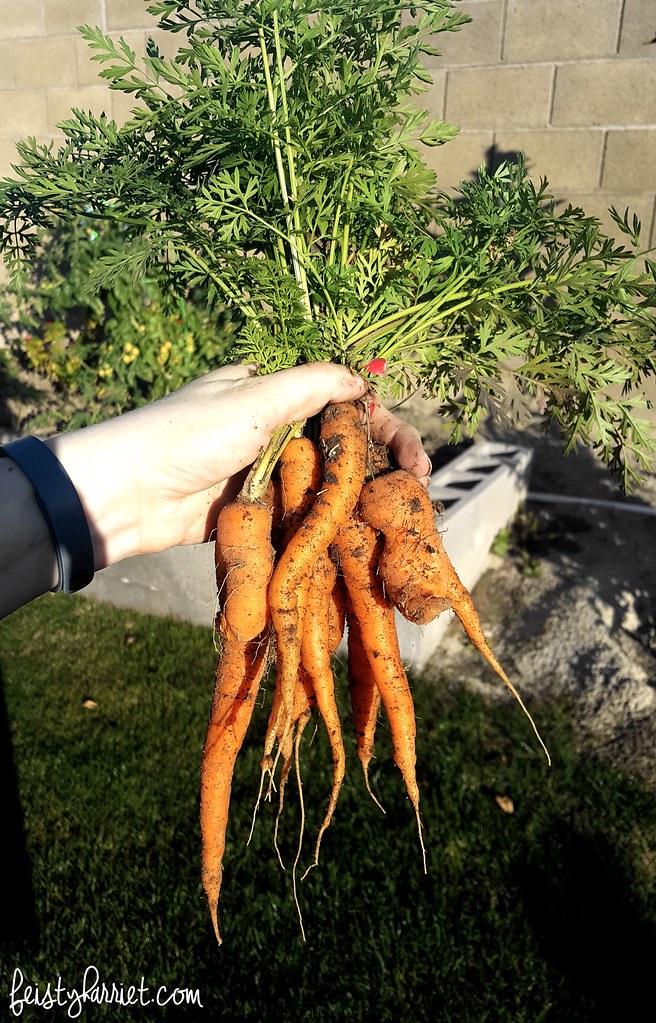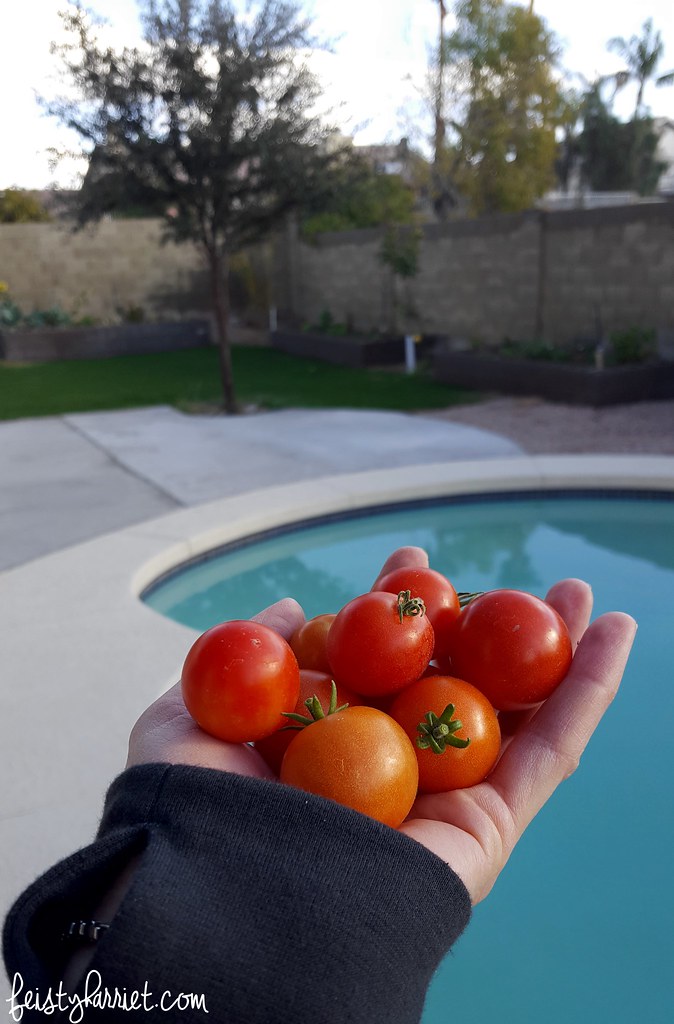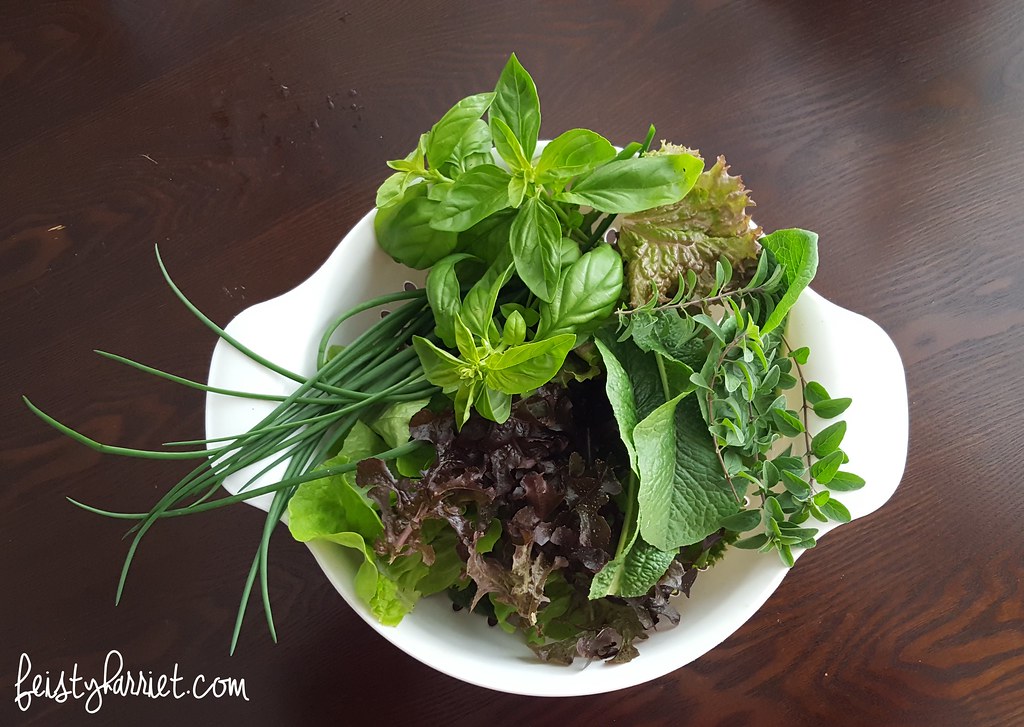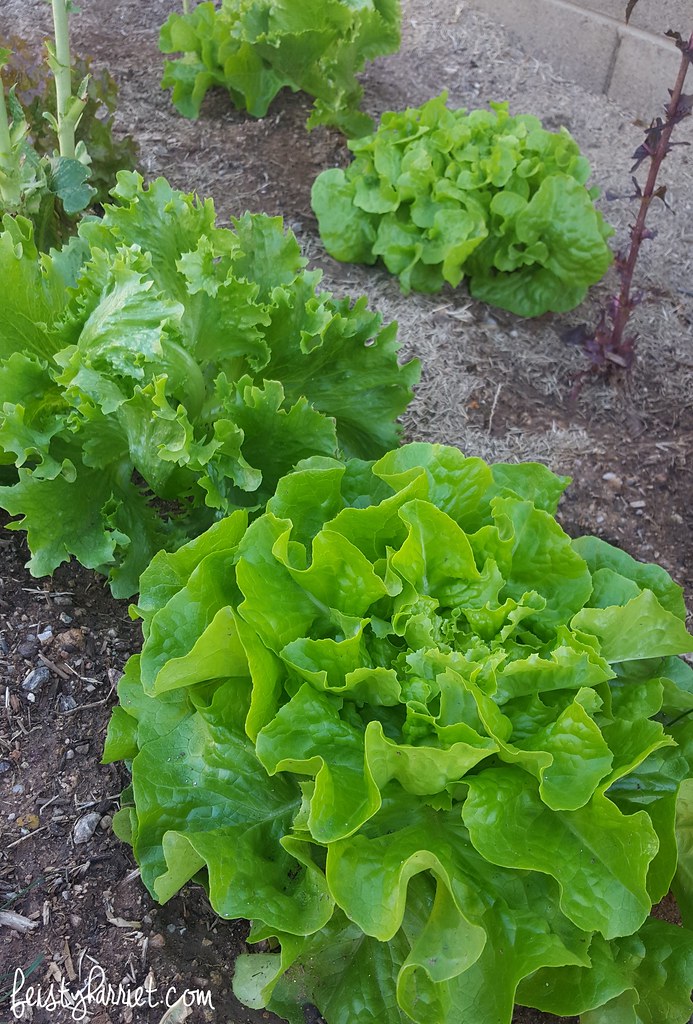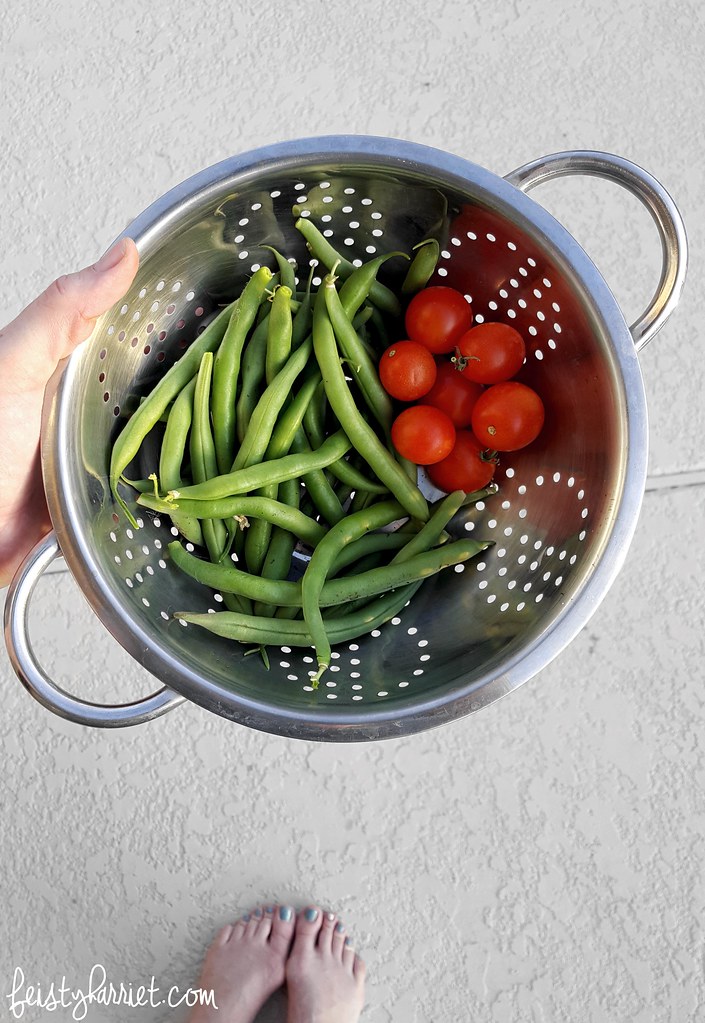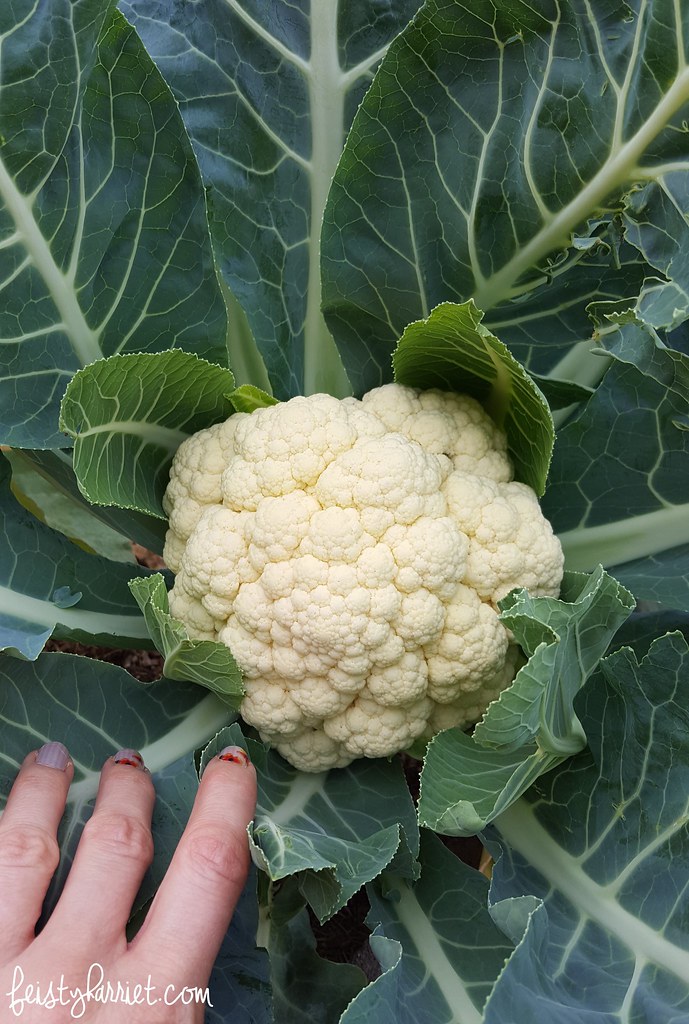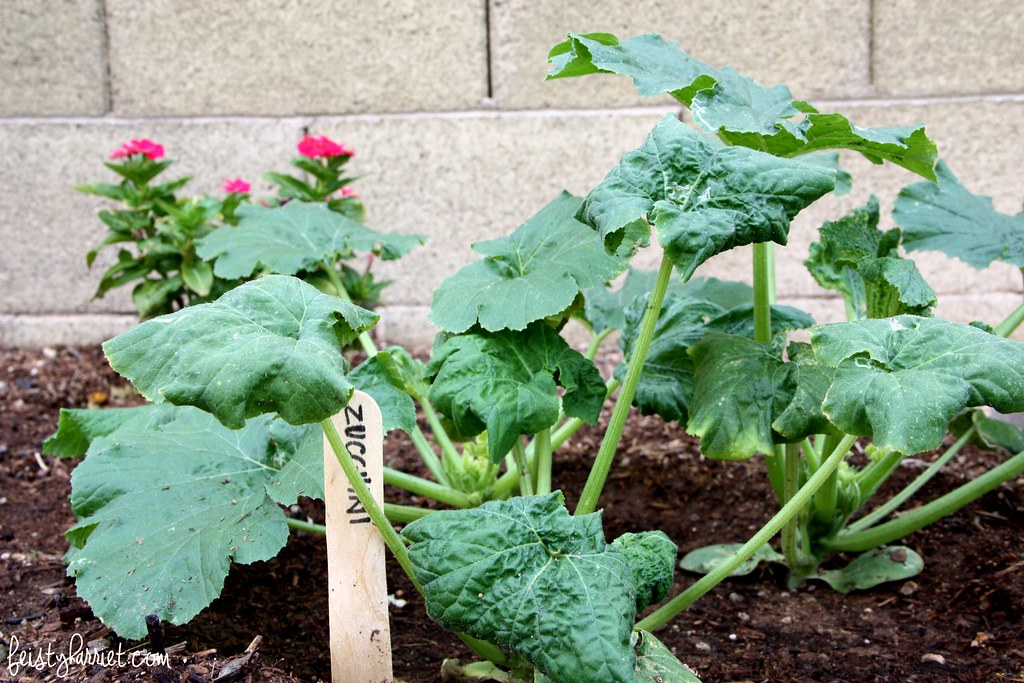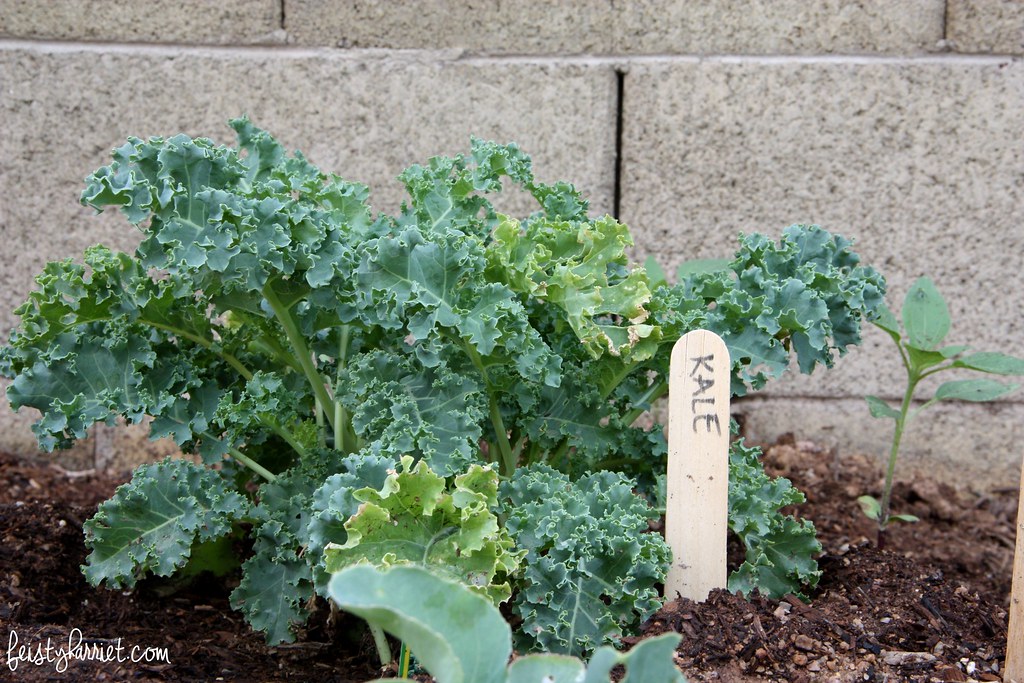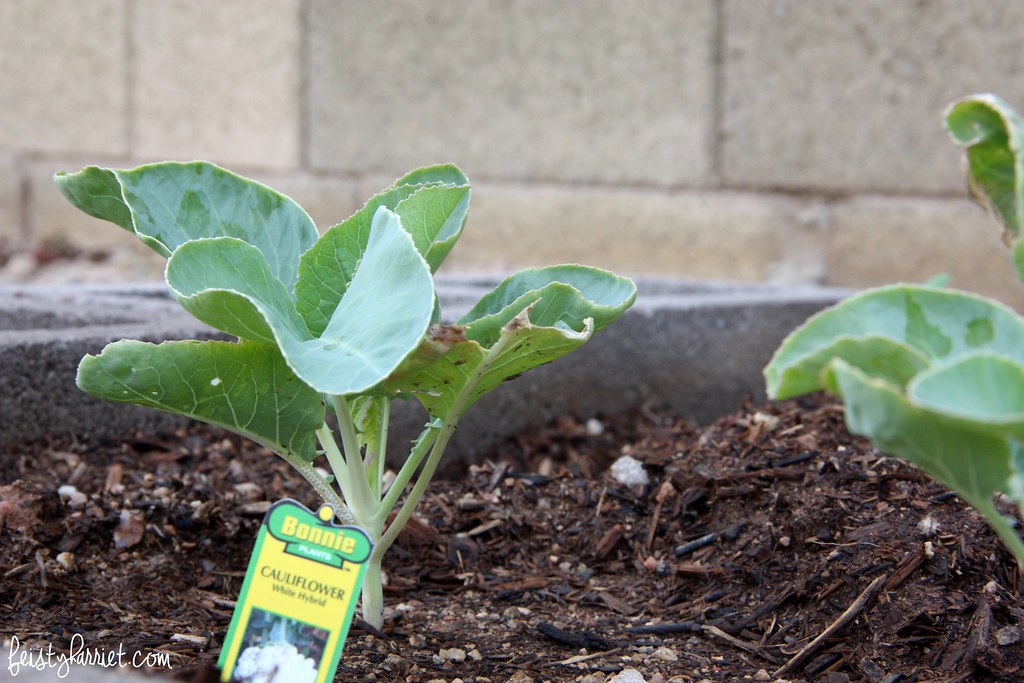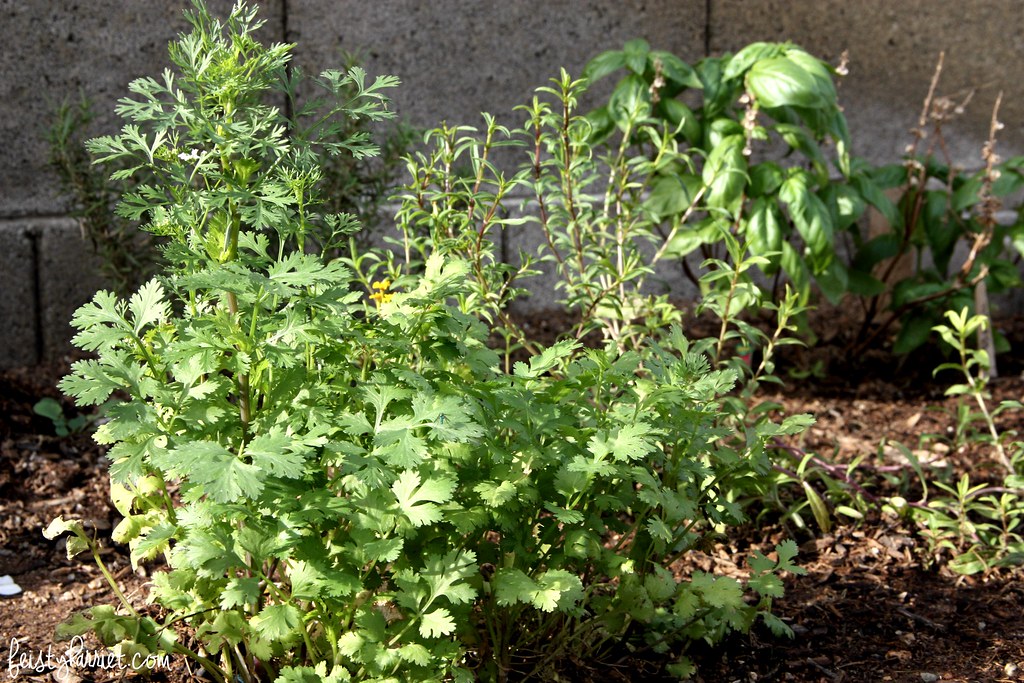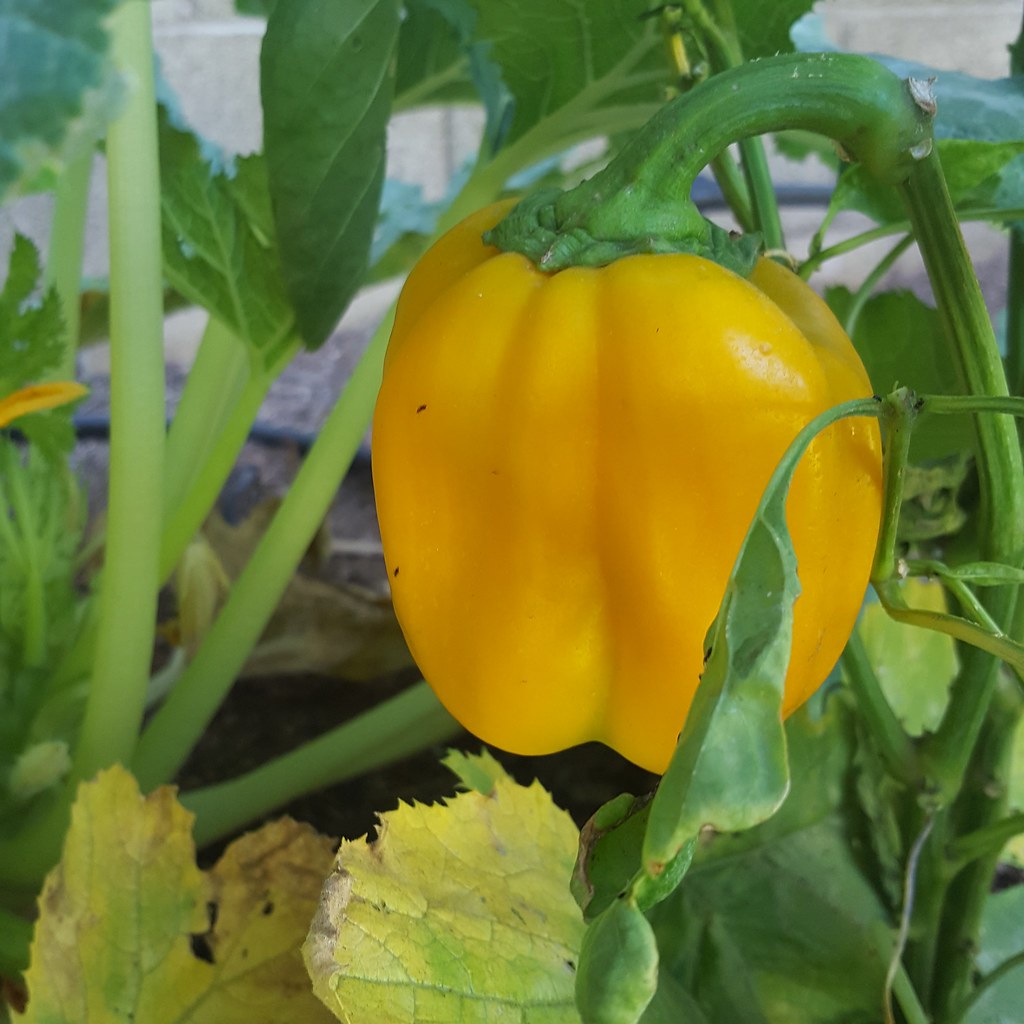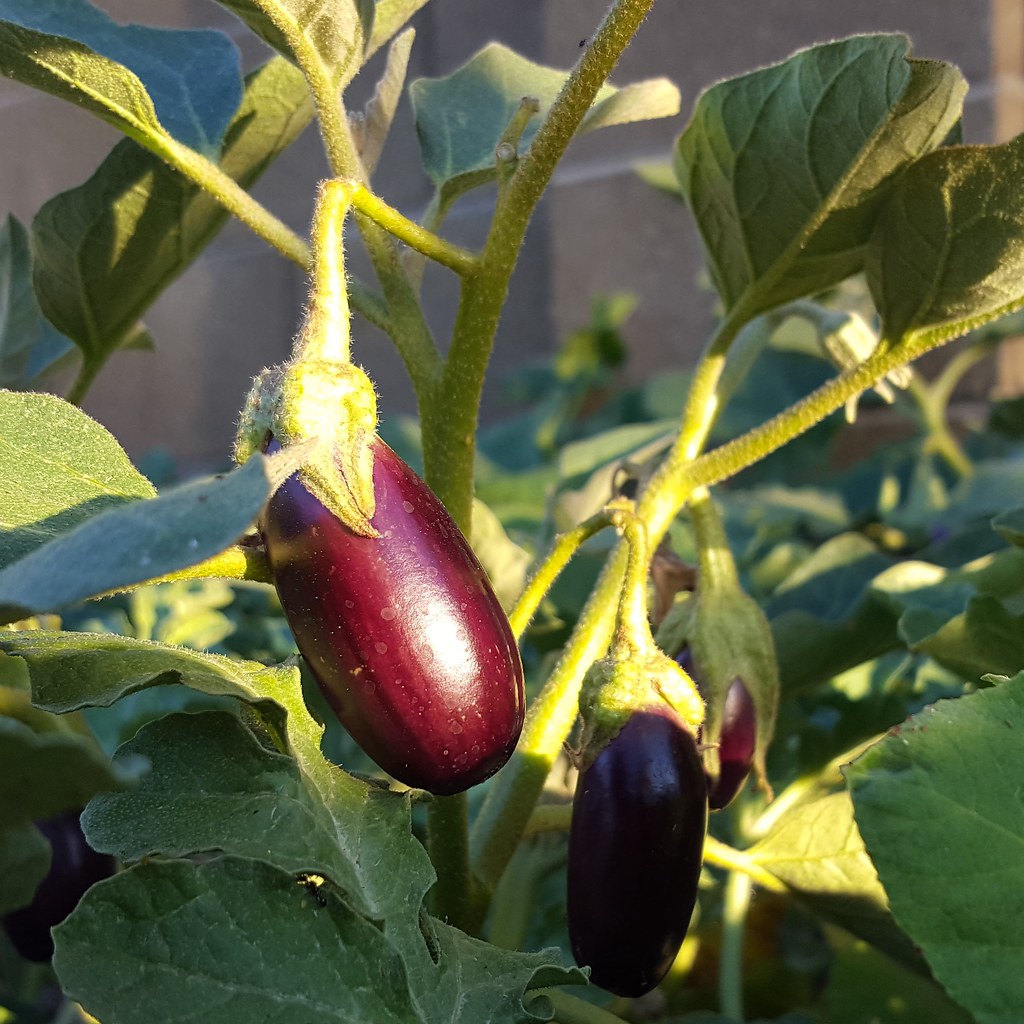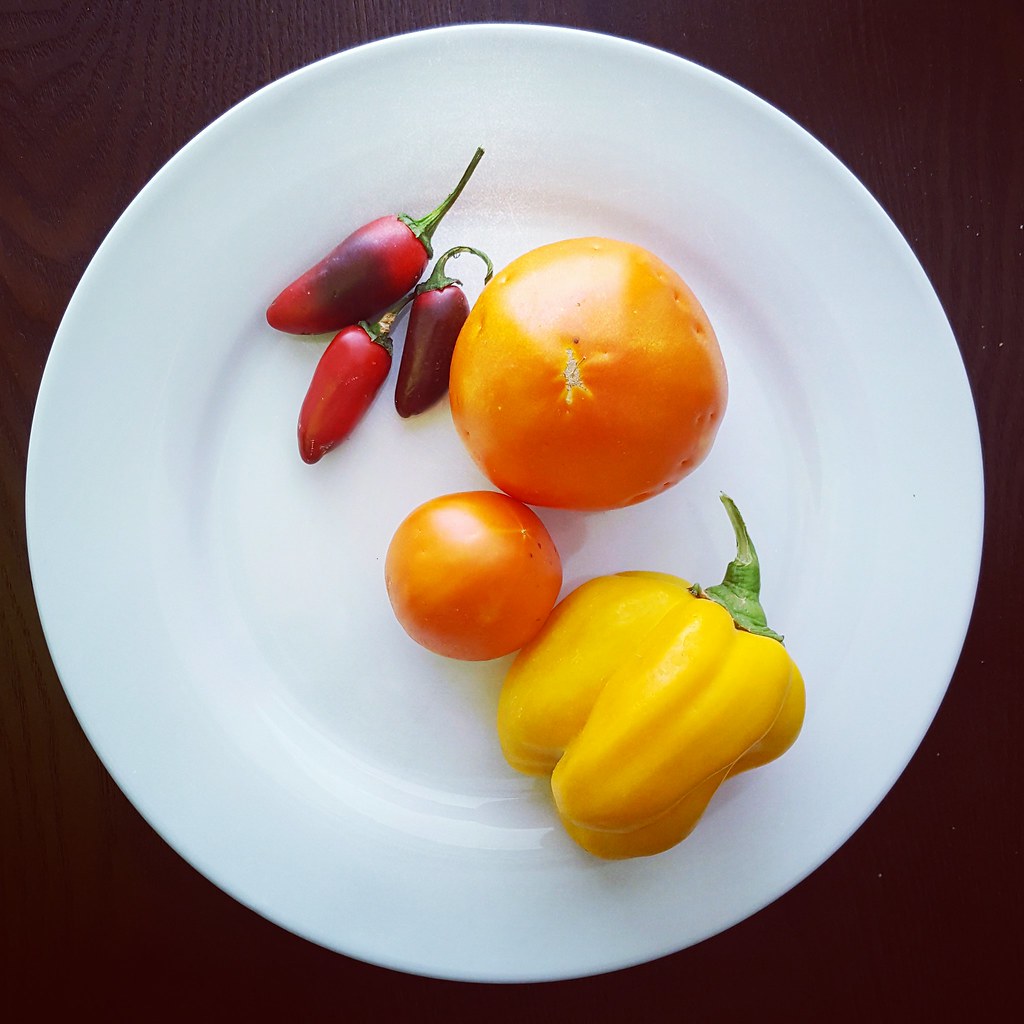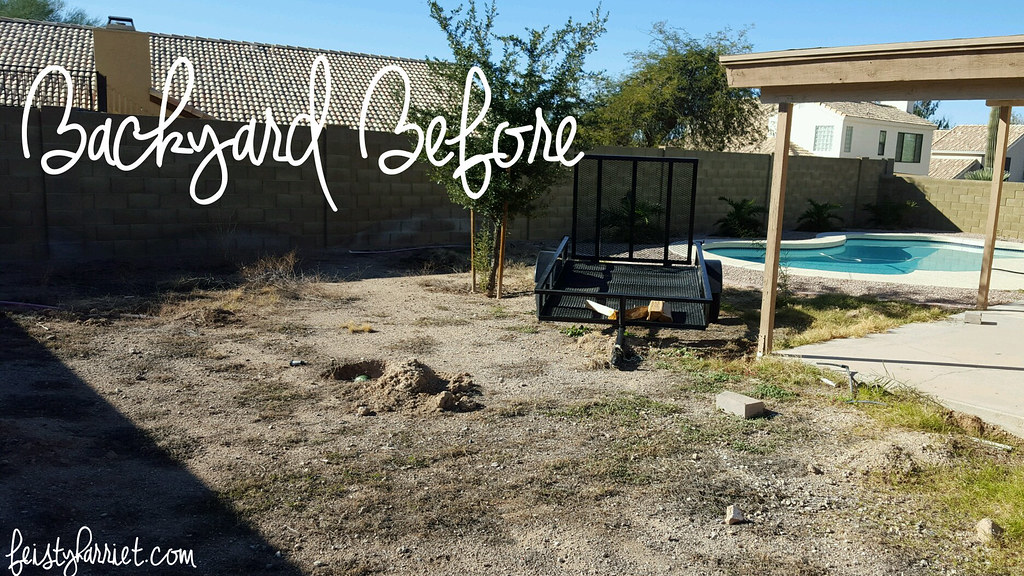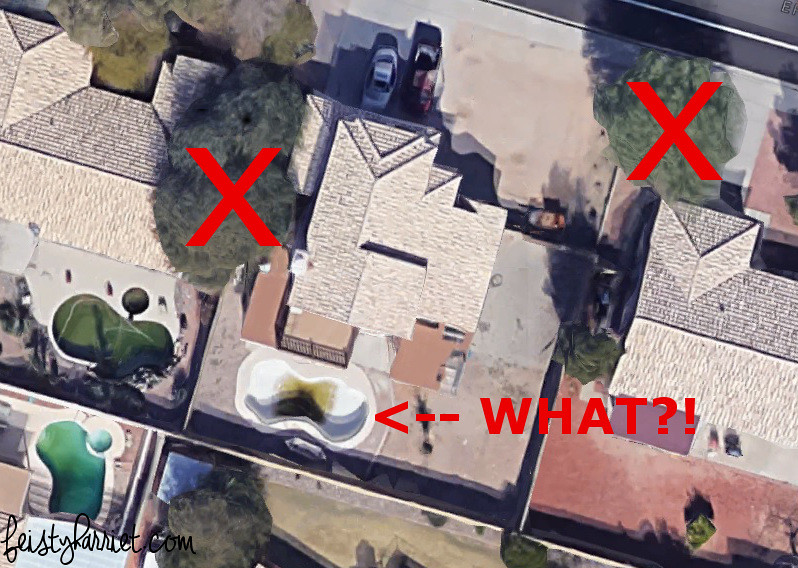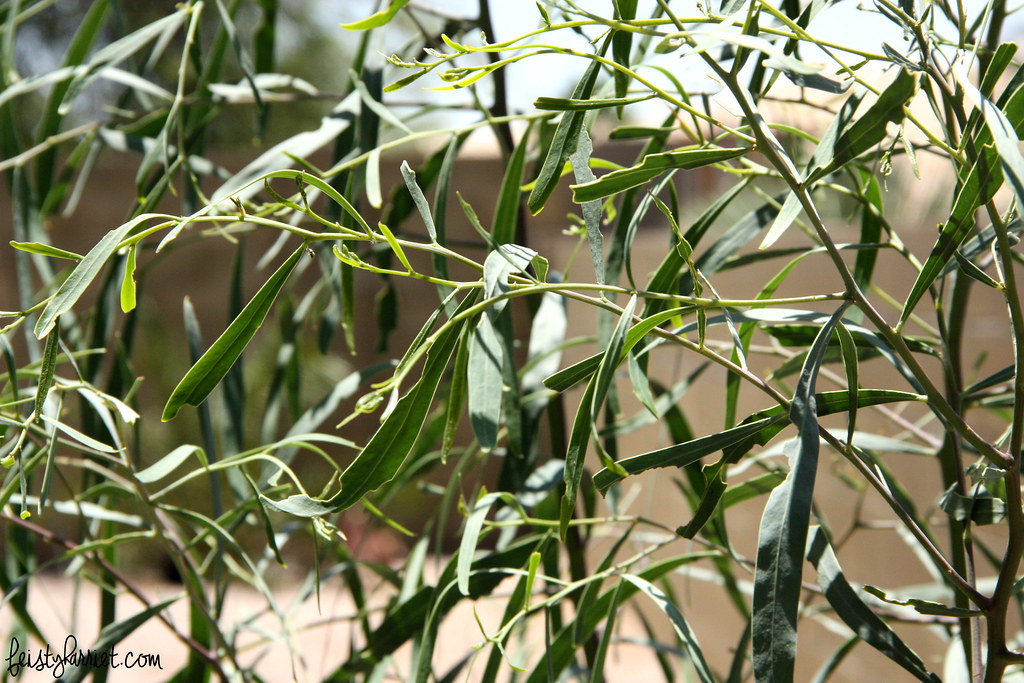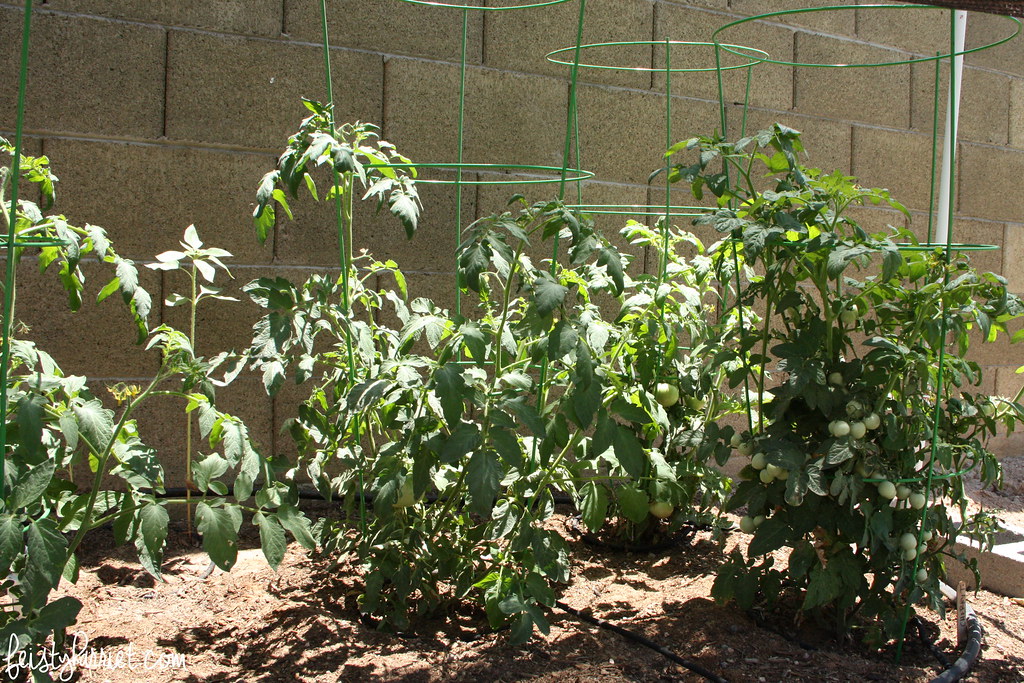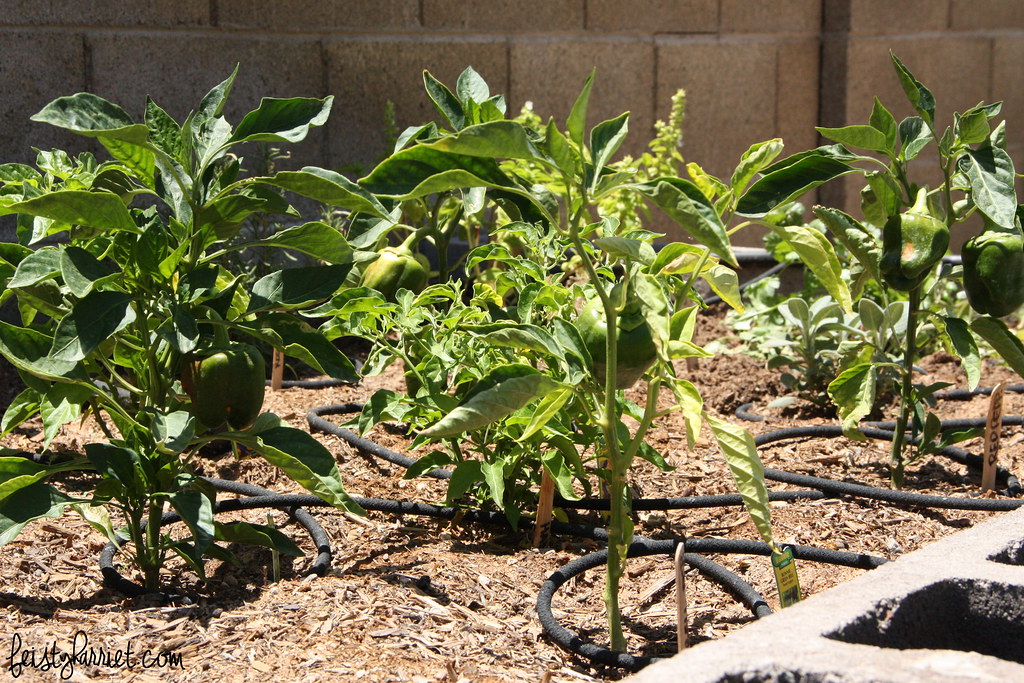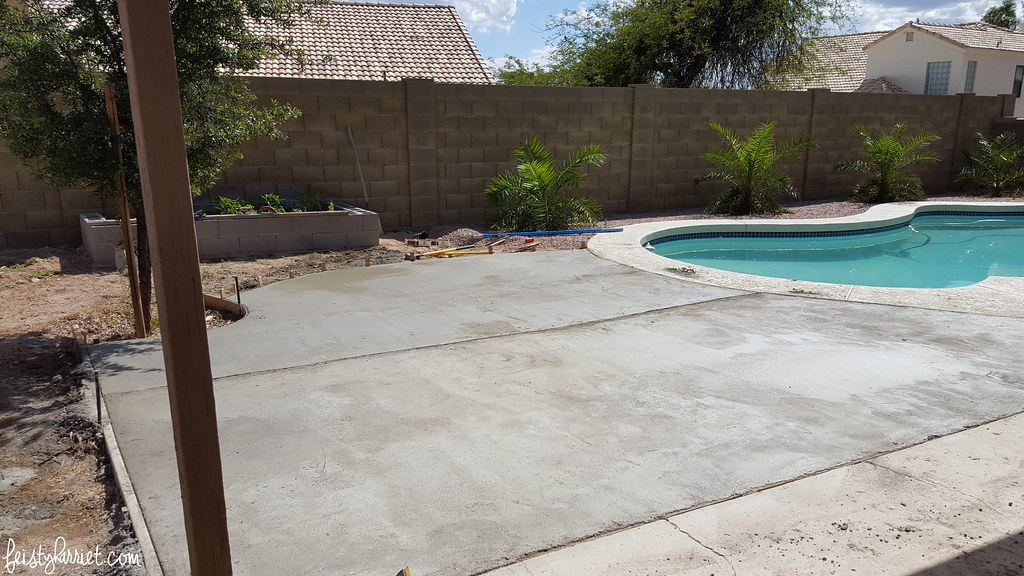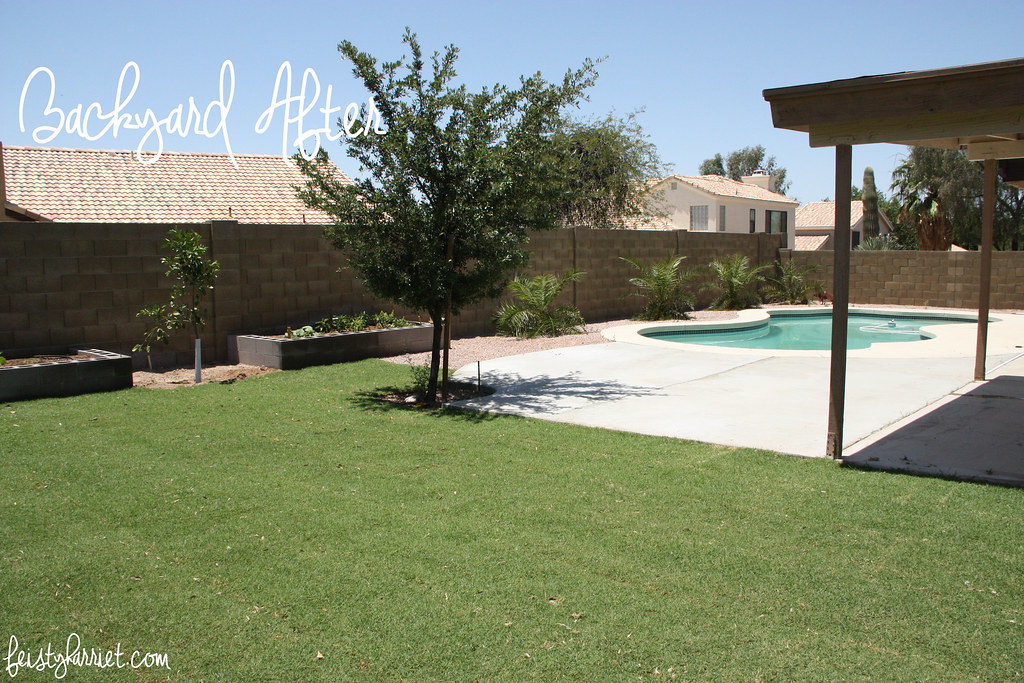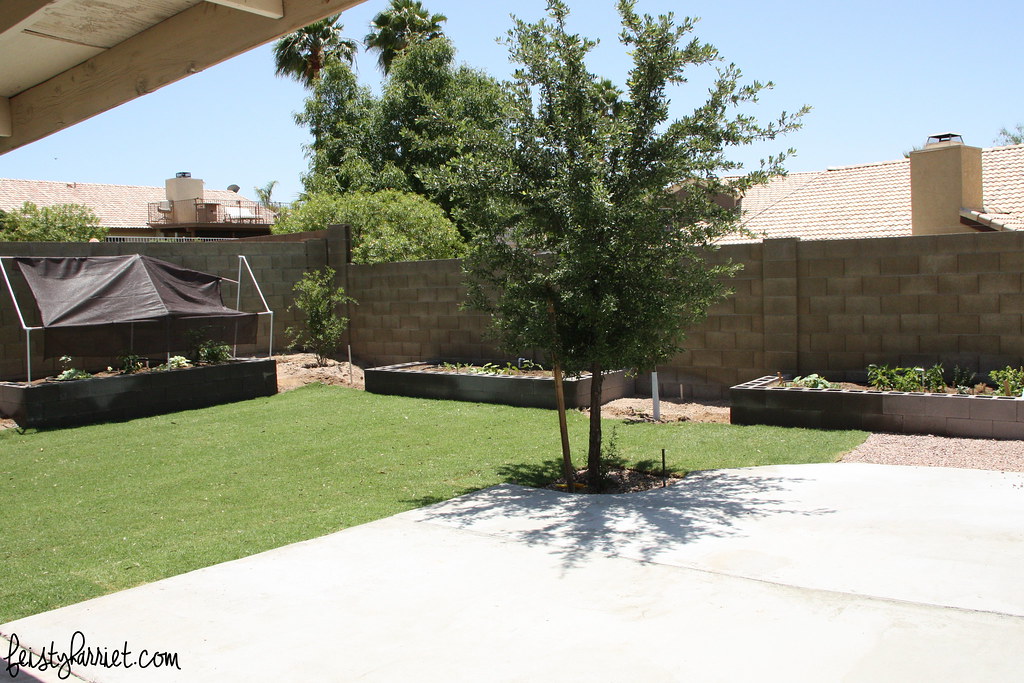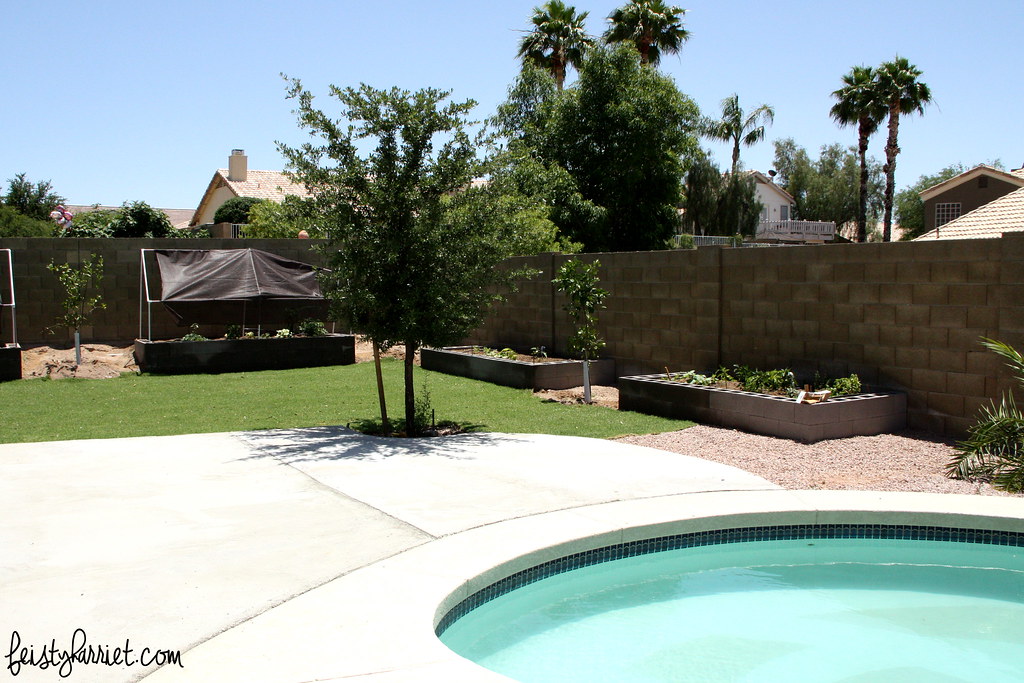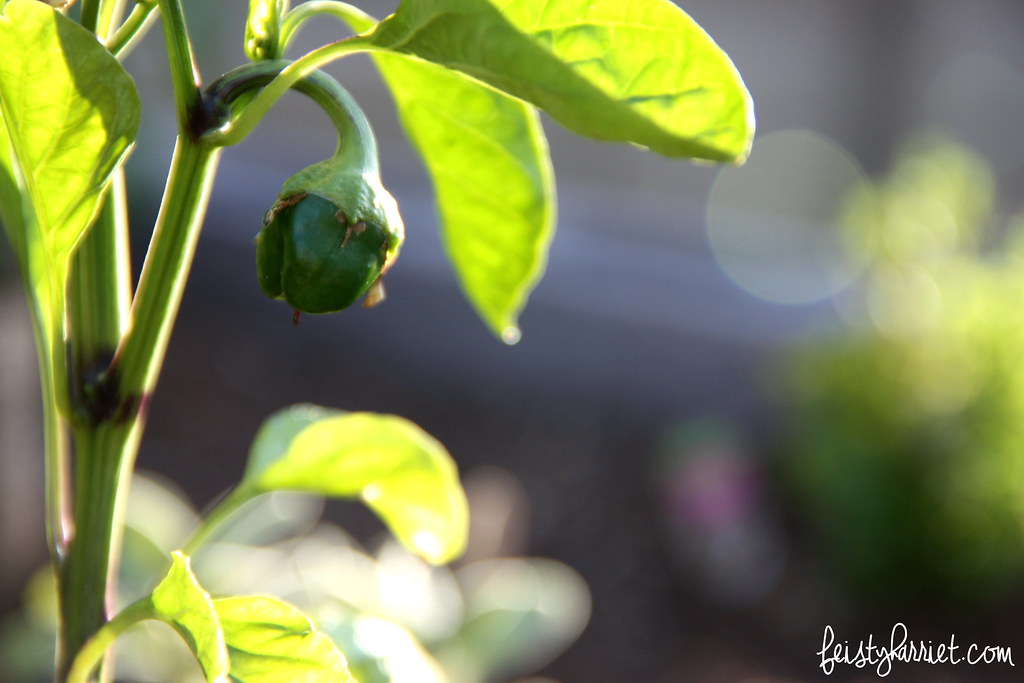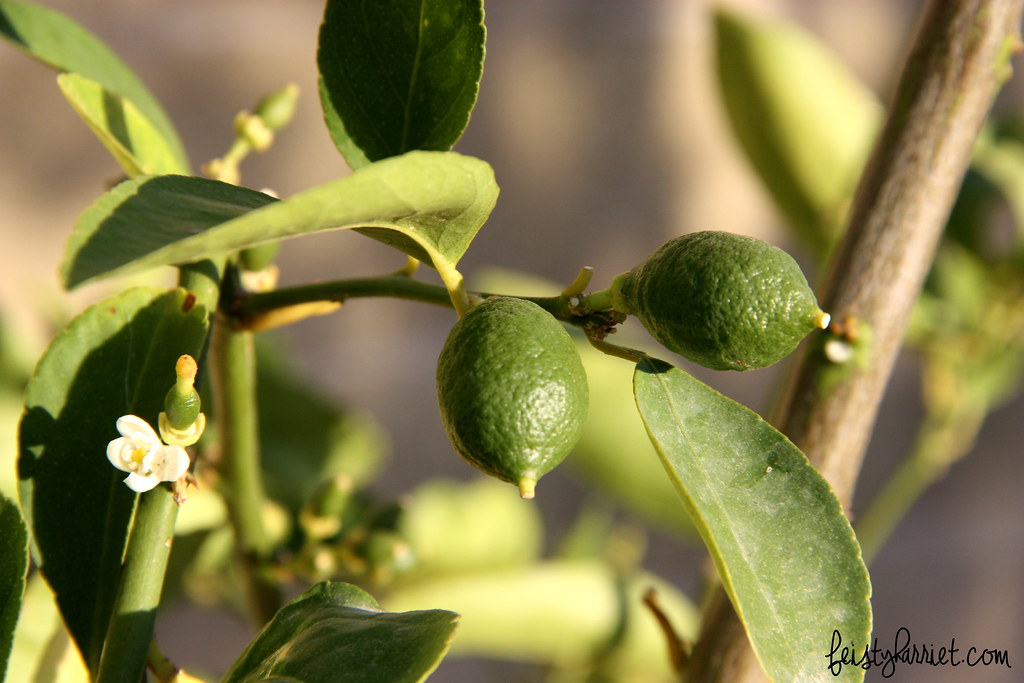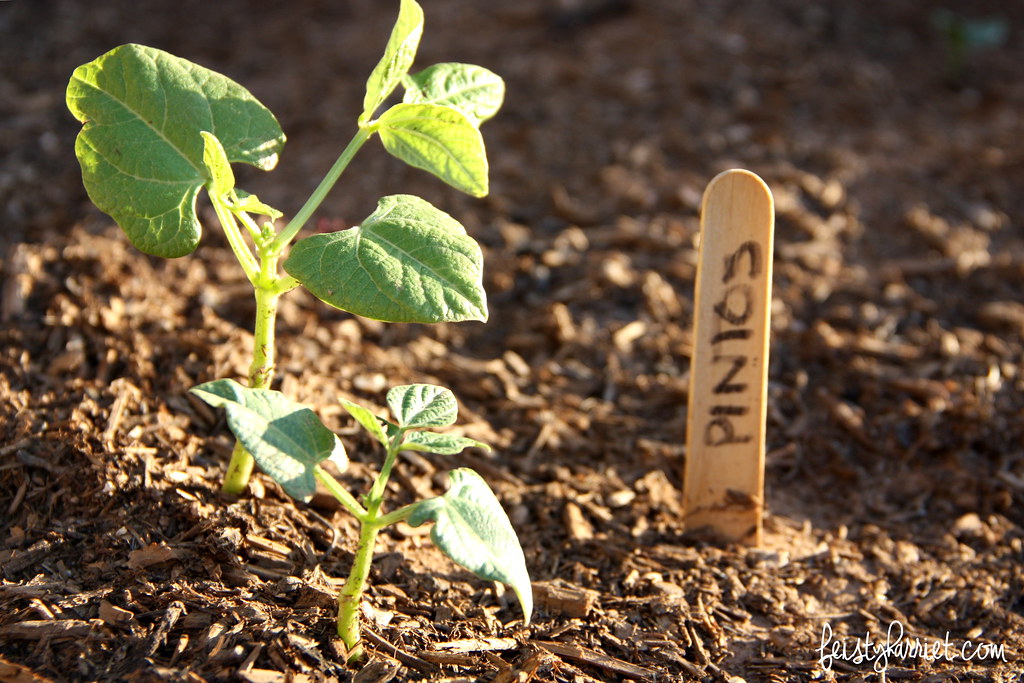Some of my most distinct summer memories are centered on our backyard vegetable garden. My two sisters and I would spend most mornings out there (under duress) yanking out weeds and mulching around the plants and grumbling about how early it was and how much we hated weeding. In July and August, however, when the corn and strawberries and tomatoes were ripe, when the cucumber and melons were perfect, and the pumpkins were starting to turn orange…well, then it wasn’t nearly so bad. The harvest part was a mixed bag. Yay for delicious food from the backyard! Boo for hours and hours juicing and smooshing tomatoes then packing them in mason jars to can.
This Arizona move has been the first time I’ve had a little place for a vegetable garden, really, anything more than a pot on the shared porch or kitchen windowsill, actually. And I sure pleaded for somewhere to try my hand at a few vegetables. Mr. Blue Eyes came through with some beautiful garden boxes in the backyard; we planted last March with some delicious success, and I re-planted for a “winter” season this fall. The cooler weather in November and December has really done wonders for my little plants (and also for my heat-hating soul). In the last few weeks I have gone into the backyard a few times a week for a double handful of tomatoes, or a couple one-gallon ziploc bags of lettuce, and to check on my cauliflower and snip some herbs for dinner. To be 100% honest, these little moments in the dirt have been, without question, the only real happiness I’ve felt from being outside since my move to the Valley of the Surface of the Sun.
A little recap of my gardening adventures the last few months:
Zucchini, yellow squash, cozelle: I’m not sure what the problem was, exactly, but these usually prolific producers would flower and start tiny baby squashes, then when they’d get about finger-length, they’d stop growing and wither and die. Then blossom again and repeat the whole process. I need to do some research into this, because, uh, who can’t make zucchini grow AT ALL!? Don’t worry, I have some successes to make up for it.
Carrots: I planted these kind of on a whim, grabbing the seed packet as I waited at the checkout counter. I could have planted about five more rows and been completely thrilled with the outcome. These grew well, the leafy tops were so pretty, and the TASTE!? Lawsy. Real carrots are sweet with a little zesty spice to them. They are best eaten right after they are picked (I haven’t perfected the storing technique to keep them crisp). I truly don’t think I can ever go back to those bags of baby carrots, all whittled and slimy and the size of your thumb…they just…no. Real carrots 4evah!
Tomatoes: I didn’t actually plant tomatoes, but I had three volunteer plants from some dropped seeds this summer. They have truly been going crazy, I pick a double (or triple!) handful of tomatoes every few days and Mr. Blue Eyes and I pop them like candy, they are so delicious!
Let’s Talk About Lettuce: I was a little hesitant to plant a bunch of lettuce, but it has been so amazing to have in the backyard! I planted about a dozen spinach plants, and another dozen “variety” pack of 6 different types of lettuce, and one curly kale plant. From those plants I get two or three one-gallon ziploc bags PACKED with leaves every week. I take lettuce to neighbors and friends, I add spinach and kale to everything, I have to try and figure out how to get more salad in my diet. It has been glorious! I will definitely repeat this plan for next year, and I’m going to add some chard as well. Eeep!
Green Beans: I love fresh green beans for dinner, I steam them a few minutes and then top with butter and salt. I think I have had these for dinner at least once a week for…months. So it would only make sense to try and grow some in the backyard, right!? Uh, well, turns out, it takes a LOT of space to grow enough green beans for dinner. I was able to get enough from all my plants for about one meal with a (small) side of green beans. I think next time I’ll use the space for something that produces more.
Cauliflower: Mr. Blue Eyes and I eat a lot of cauliflower, we use it as a rice substitute once or twice a week, and between the two of us can eat a whole head in one sitting. I steam it, roast it, boil it, rice it, dice it…the works. So when I saw a pallet of cauliflower starts at the nursery last fall I immediately popped them in my cart. The leaves are almost as long as my arm, and sure enough, one perfectly round cauliflower is at the center of each plant. I picked my first one this week and it was a delicious roasted side! I’ve got seven more than are still growing (I want them about 10″ across before I use them) and I cannot wait to spend the next few weeks using cauliflower from the backyard! (CAULIFLOWER!? WHO KNEW!?) I think I’ll try broccoli next year as well!
A few weeks ago I planted a bunch of peppers, some chard, and brussels sprouts, and in another few weeks it will be time to do my “summer” planting. I am still harvesting tomatoes and lettuce and green onions regularly, and waiting for the cauliflower. The peas were planted too early (meaning, it was too hot, not it was too cold, such a weird shift for me) and next year I’ll try them a little later to see if they’ll grow better. I’ve been keeping notes on my little plants and am so excited to try to get another round of vegetables out of my backyard! One point in the Pro Arizona column: multiple seasons for vegetables. (Big, Fat “WTF!” in the Negative column is that the summer season is 9 months of triple-digit temperatures. Nope, not exaggerating.)


